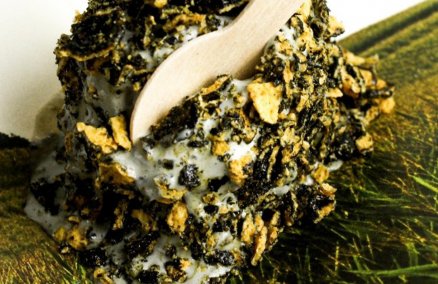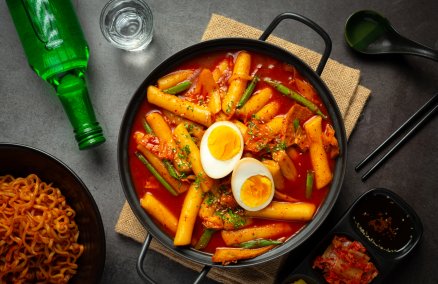For the second year in a row, a
Bangkok restaurant was voted number one in the annual list of Asia’s 50 Best Restaurants. Progressive Indian restaurant
Gaggan (No. 2, Top Tables 2015) replaced David Thompson’s
Nahm (No. 13, Top Tables 2015) at the top spot, while a further three Bangkok restaurants also featured in the list. But while these Asian-focused foodie strongholds were the ones awarded in Singapore on Mar 9, the buzz phrase in Bangkok this year has been European ultra-fine dining.
We actually welcomed two restaurants affiliated with chefs heading three-Michelin-star establishments, with
J’Aime by Jean-Michel Lorain (listed, Top Tables 2015) beating
L’Atelier de Joel Robuchon (No. 1, Top Tables 2015) to be the city’s first. But they weren’t alone. The Dutch-born
Savelberg (No. 28, Top Tables 2015) shut up its one-star operation in the Hague and moved to Bangkok lock, stock and barrel, while chef Vincent Thierry of Hong Kong’s once three-star Mirror restaurant also relocated here for the opening of
Vogue Lounge.
All of this competition right at the top of the dining food chain has had people asking: can Bangkok really sustain this many super-high-end restaurants? Oliver Kramny, general manager of The Water Library Group, who for over five years has been in charge of some of the city’s most expensive establishments, is skeptical. “The spending power here is high,” he says, “but it’s the willingness to spend that’s a problem. Robuchon, Savelberg,
Water Library Chamchuri [No. 6, Top Tables 2015]—as well as the others that are coming—can only be full if tourists visit too. You need people from Taiwan and Hong Kong to come and eat.”
He cites the spending habits of Bangkok’s wealthy elite in comparison to their Southeast Asian neighbors as one of the main challenges facing Bangkok’s loftiest establishments: “In Singapore and Hong Kong—and I know this because I used to work there—the advantage is that people come to spend corporate money. Here you don’t have that; the money is private. Big companies are family owned and so they spend more carefully. We have millionaires, even billionaires, who come to Chamchuri with their own bottle of Prosecco because they want to save B1,000.”
Mason Florence, the regional chairperson for World’s 50 Best Restaurants, is also reluctant to view Bangkok’s fine-dining scene on the same footing as Asia’s financial capitals. “The Michelin thing is happening,” he says, “and all these high-end, concept-driven Michelin chefs are fantastic for the city, but personally I’m not sure quite how well it fits with Bangkok. We’re not a finance center like Tokyo, Hong Kong or Singapore. Robuchon in New York is amazing, but for Bangkok it doesn’t really fit as well.”
For him, Bangkok’s charm lies more in its hair-down establishments like
Opposite (No. 21, Top Tables 2015),
Little Beast (No. 15, Top Tables 2015) and
Eat Me (No. 7, Top Tables 2015), which blur the line between restaurant, bar and cafe. “Bangkok has a bohemian streak about it, and that’s more the experience people are looking for. They don’t come here for ultra-fine dining.”
He may have a point. Local perception versus regional perception of the Bangkok dining scene is made quite clear when you look at Top Tables’ highest-ranking restaurants (as voted by a local panel of judges) next to the choices of Asia’s 50 Best’s global panel. While L’Atelier de Joel Robuchon placed No. 1 in our guide (with Gaggan trailing one place behind), it failed to appear anywhere in Asia’s 50 Best despite Robuchon in Hong Kong and Macau both gaining entry.
But whichever list you look at, there is one constant: the number of highly regarded fine-dining restaurants that are now specializing in authentic Thai flavors, with
Issaya (No. 26, Top Tables 2015),
Bo.lan (No. 10, Top Tables 2015) and Nahm doing well in both guides. Chef Thaninthorn Chantrawan helms one of the latest to join the pack,
Osha (listed, Top Tables 2015), a glitzy operation on Wireless Road that serves Thai dishes made with super-premium ingredients. “More and more people are doing Thai food as fine dining,” he explains. “Thai chefs are delicately curating ingredients, paying attention to presentation, even making sure the wine and cocktail lists are of the highest standard.”
And now, Thaninthorn says, locals are as willing as foreigners to open their wallets for a Thai fine-dining experience. “Thai people are more interested in dining and valuing their food more. This is great for local chefs because we can share our thought processes; present dishes in an order of courses, which doesn’t happen in traditional Thai restaurants.”

Chef Vichit Mukura, the long-serving head chef at Mandarin Oriental’s Sala Rim Naam, is also upping the standard of Thai food at his new chef’s table restaurant,
Khao (listed, Top Tables 2015), where a heady, 10-course dinner of top-quality, elegant Thai dishes costs B9,900 per seat. “Elevating Thai food to fine dining doesn’t mean losing Thai flavors,” he says. “Real Thai food tells the story of recipes that have been finetuned over centuries. It’s about knowing your ingredients and the right time to use them. I only do single servings, so that everyone can taste every element of every dish.”
These Thai chefs, along with others including Thitid Tassanakrijohn of
Le Du (No. 3, Top Tables 2015) and Chumpol Jangprai of
Siam Wisdom (listed, Top Tables 2015), are stealing the spotlight from the foreign chefs who once headlined Bangkok’s Thai fine-dining scene. “Nahm was a real trailblazer,” says Osha’s chef Thaninthorn. “The Westerners in our dining scene led to the fine-dining direction. Presentation is another thing that’s changed a lot because of foreigners serving Thai-Influenced food.”
The demand for a contemporary approach to Thai dining has also filtered through to the old-guard establishments. Mason Florence points to the impact that young hotelier Siradej Donavanik has had at his family’s hotel, the venerable Dusit Thani. “It’s one of the most traditional hotels in Bangkok, and this young guy, Champ, said screw it and brought in Morten Nielsen from Sra Bua to reinvent
Benjarong,” says Florence. “It’s fantastic what he’s done there with Thai cuisine.”
Siradej is also one of the partners behind the new
Ginza Sushi Ichi (No. 4, Top Tables 2015), this year’s highest-placing Japanese restaurant.
But the cultural exchange goes both ways. Chef Zra Jirarath of
Aston Dining Room (listed, Top Tables 2015) has had to struggle to gain acceptance as a Thai chef doing Western fine dining. For him, there are only positives for Bangkok’s food scene in the arrival of big names from abroad. “I think the opening of L’Atelier de Joel Robuchon really showed everyone how things are meant to be done, both in terms of food and service. I really welcome it. It sets the standards,” he says.
Chef Vichit Mukura of Khao is with him: “It’s good to have Michelin chefs here so Thais can get a taste of the world’s finest cuisines, and learn how to develop our own.”
So what do these changes mean for those who used to be at the top? Bangkok’s new dining landscape may spell uncertain times for some places. Last year’s Top Tables No. 1 spot, for example, went to Herve Frerard’s
Le Beaulieu, which this year failed to appear in the Top 10 at all, coming in at No. 12. In fact, almost half the
Top Tables Top 10 is taken up by restaurants which opened in the past 12 months. Hopefully, come this time next year, our love of the new won’t have outshone restaurants genuinely offering this city’s highest caliber of cooking and service.


Satellite Chefs
Robuchon, J’Aime and Sushi Ichi all lived up to the reputations of their brand-name supervising chefs.
Chef’s Tables
Water Library Thonglor may have closed, but Aston, Khao and
Sensi mean cooking as theater—with the chef taking center stage—has never been hotter.

Thais Doing Thai Fine Dining
Vichit Mukura moved from the Oriental to Khao, Chumpol Jangprai offered three different approaches to Thai fine dining at Siam Wisdom, and Osha proved people are willing to spend B1,500 on pad krapao.

Asian Flavors,
Western Preparation
Khao and Le Du made a whole new culinary art-form using traditional Southeast Asian flavors, while Morten Nielsen turned Benjarong into something extraordinary.
Omakase
It’s the Japanese answer to chef’s tables, where diners entrust their meal to the chef.
Fillets,
Sushi Hinata and Ginza Sushi Ichi have taken the tradition to a whole new level.
Sustainable Seafood
The Oyster Bar’s Bill Marinelli has been making big noise about restaurants’ seafood ethics, and the chef-y in-crowd of Gaggan Anand (Gaggan), Jess Barnes (Opposite), Nan Bunyasaranand (Little Beast) and Tim Butler (Eat Me)—to name but a few—are right behind him.
Authentic Italian
Paolo Vitaletti’s Roman-style
Appia has been a Top 10 fixture ever since it opened. This year he did it again with the devoutly Neopolitan pizzas of
Peppina, while Francesco Lenzi blazed a trail for Tuscan dining at
Lenzi Tuscan Kitchen. Sensi was another strong opening for Team Italy.


























